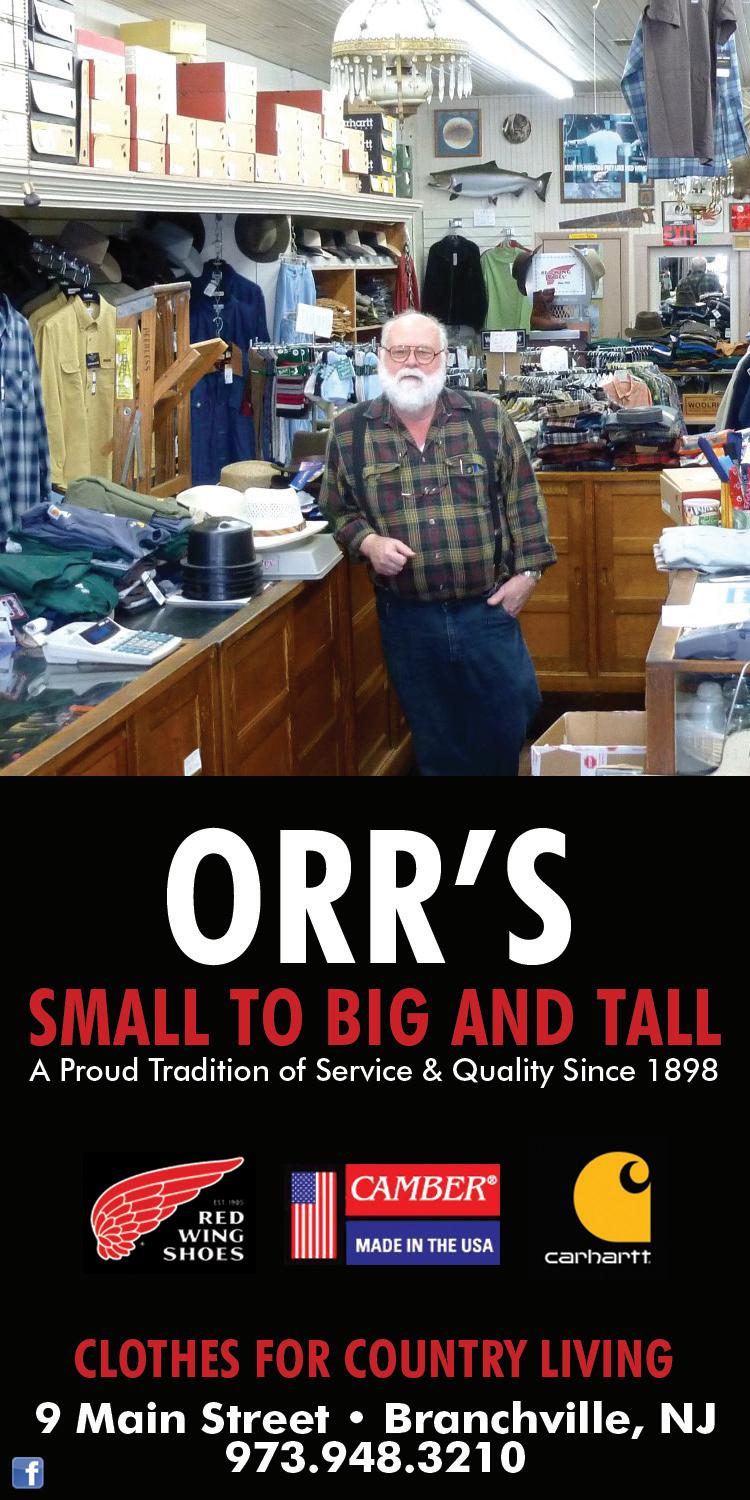
13 minute read
in memorandum
Trust Me I’m a Lifeguard Bob Keiber in a scene from the movie,
Robert John Keiber
January 21, 1944–October 18, 2021
B
ob Keiber passed away last month. Many remember Bob as a supportive, kind, and talented person, and yes, he was all that. Bob also had a great sense of humor and a unique approach to life.
Working closely with Bob on the Board of the Black Bear Film Festival, I saw that he was a creative soul who was never afraid to try something new. There were no boundaries for his ideas, and his tenacity saw him through to the end of any project.
Bob was a renaissance man, whose creative muse spoke to him in all of his approaches to life. His prolific career included heading up the Media Communications Department at NY’s Rockefeller University, starting a theater company in the West Village, acting in over one hundred TV commercials, and playing the role of the original Kit on the soap All My Children. His love of art led him to curate the art galleries at Berkeley College, NYC, before settling in Milford, PA. Song writer, movie actor, and painter, too, Bob had vision and ran with it, always mixing in a sprinkle of charm and his own brand of wit. poems, and haiku to The Journal. A favorite was his photo essay about his “Love Affair with His Lake” that we ran in August of 2019.
His book, Urban Hykool, is a modern commentary about life in the Big Apple as seen through Bob’s eyes:
Parcel driver throws boxes to back of the truckeach of them marked “fragile”.
Bloomingdale’s beauty. I stare, she smiles and walks on. We had a moment.
Seems out of place. tuxedo with cello rides Subway to the Met.
One of his books was called My Cancer Diary. As a seventeen-year cancer survivor, Bob gave back with advice and genuine concern. He handed his book freely to people in need and donated profits from the sale on Amazon to cancer research.





American Christmas Cookies from around the World
Home bakers all over the country are gearing up for their traditional holiday cookie bake-a-thons, gifting baskets, tins, and plates piled high with gooey, nutty, sugar-powdery, homemade deliciousness to friends and family. Cookie cutters in various shapes and sizes—candy canes, snowmen, snowflakes, Christmas trees—come out of storage and shine on display atop the kitchen counter, waiting next to packs of room-softened butter and boxes of granulated sugar. Michael Bublé’s soft, low voice tells us that it’s beginning to look a lot like Christmas, and the cookie makers know that the holiday season is now under way.
America is a melting pot. The cookie recipes that we bake here have been incorporated from recipes that were passed down from generations of unique heritages, customs, and traditions throughout the world. The sugar cookie, for example, has its roots in Medieval Arab tradition. As a matter of fact, we are hard pressed to come up with an original American Christmas cookie.

The chocolate chip cookie qualifies as American—it was created in Massachusetts by Ruth Graves Wakefield of the Toll House Inn—but it is enjoyed at all times of the year. The peanut butter cookie comes close to being an original American creation. George Washington Carver included three cookie recipes using crushed or chopped peanuts in his 1925 work on growing and preparing the peanut for human consumption, which included over three hundred peanut products. But the recipes didn’t refer to peanut butter, which wasn’t listed as an ingredient until the 1930s. Regardless, the peanut butter cookie is not just a holiday recipe, either.
In the spirit of sharing some holiday love, we’ve reached out to a few home bakers in our area and asked them to share some of the traditional family recipes that they include in their holiday cookie repertoire. Enjoy!
Nonna Capicotto’s Italian Cookies Rosemarie Mazzei
6 eggs 2 cups sugar 4 tsp baking powder 2 tsp vanilla 1.5 cups shortening (butter or margarine) 5 cups flour ¼ tsp salt
Let shortening get soft. Cream with sugar until smooth. Add eggs, mixing about 3 or 4 eggs at a time. Mix until smooth. Add vanilla and mix in. Sift flour with baking powder and pinch of salt. Add flour mix, folding it into batter. Batter should be tacky; if more flour is needed, add it. Spoon batter into a cookie press, either an electric or manual press. Bake 10–12 minutes at 350 degrees. Yields 150 cookies.

Greek Orange Whiskey Cookies Karen Kontizas
32 oz flour 2 tsp baking powder 1 tsp baking soda 2 cups sugar 1-1/4 cups margarine 1 cup Mazola oil 2 eggs 1 small jigger of whiskey 1/2 cup orange juice 2 tsp orange or lemon extract
First mix wet ingredients and then gradually add the dry ingredients. Spoon onto a baking sheet lined with parchment paper, a tablespoon at a time. Bake at 350 degrees for 10 minutes.

Norwegian Krumkake Edith Klev Johnsen
4 eggs 1-1/4 cups sugar ½ lb butter, melted and cooled 2 cups flour
Beat eggs together with the sugar. Mix in the melted butter and flour. Pour about a tablespoon of batter into the center of a waffle iron and close top. Cook on the stove for a short time, until golden brown. Remove from iron and roll while still hot. Set aside to cool. May be eaten as is, filled with custard or whipped cream, or dipped in melted chocolate or powdered sugar. Scottish Shortbread Margaret Syme

1 lb salted butter 1 cup sugar 5 cups flour
With a pastry cutter, cut the sugar into the butter until it’s blended. Add flour in 1 cup portions and cut crisscrosses using 2 knives until the mixture looks like course meal. Press the dough into an 11” by 16” pan until the depth is uniform. Score into desired piece sizes and prick each piece with a fork. Bake at 300 degrees for an hour, remove from the oven, then rescore with a knife. Put a dish towel over the cookies and then place a cooling rack on top of the towel. Turn over to cool.
Continued on page 28






Mexican Polvorones con Nuez (with nuts)
Danielle Alejandra Garcia Ramirez 1 cup powdered sugar 1 cup unsalted butter (softened) 2 cups pastry flour 1/2 tsp salt 1 Tbs vanilla extract 1/4 cup pecans Cream together the butter, sugar and salt till silky. Add vanilla extract. Slowly incorporate flour 1/4 cup at a time. Then add chopped pecans. Shape into little balls (about a Tbs each), place on a greased baking sheet and bake at 325 degrees for 12–15 minutes or so (they shouldn’t get brown). Remove from oven, let cool and sprinkle with powdered sugar to taste. And last but not least, we highly suggest Dorie Greenspan and Pierre Hermes’s, World Peace Cookie. This recipe of chewy, chocolatey, incredible goodness can be found in the cookbook, Dorie’s Cookies or by Googling it on the web. According to its author.
World Peace Cookie
And last but not least, we highly suggest Dorie Greenspan and Pierre Hermes’s, World Peace Cookie. This recipe of chewy, chocolatey, incredible goodness can be found in the cookbook, Dorie’s Cookies or by Googling it on the web. According to its author, “The World Peace Cookie lives up to its name. If everyone had it, peace would reign o’er the planet. I’m convinced of this.”








It’s All About Hope and Family Life with Layla Impressions from a Master Pete Caldera

Without a song, birds would be out of work. -Francis Albert Sinatra
When I was a young boy growing up in New York City during the 1950s and 60s, a passionate Yankees fan and later a Mets fan, an event occurred that would change my world for the rest of my life. A music group called the Beatles (you may have heard of them...they had some good songs!) appeared on the Ed Sullivan Show. As a fourteenyear-old, I was immediately transfixed by their sound, their appearance, charisma, and telegenic magnetism. The group would change contemporary music forever. It was a phenomenon in-the-making, and a legend was born.
I, and about a zillion young guys, went right out and had to have a guitar and shoes with Cuban heels. We did our best to try and be just like them. We learned some of the chords to their songs, and tried to get away with growing our hair longer. We wanted to emulate them and perhaps get girls to listen to us? Their style and music seeped right into our DNA.
For generations, this phenomenon of idolizing popular singers has been happening. Before my time, there was Elvis Presley, and before him, the biggest name of all was Francis Albert Sinatra, aka the Chairman of the Board. Sinatra’s attraction seems universal. His sixty-year career left a legacy that reverberated deeply with aspiring singers and musicians. He is generally perceived as one of the greatest musical artists of the 20th century and one of the bestselling singers of all time, having sold an estimated 150 million records worldwide. How did he do it?
Sinatra blended a mix of jazz, blues, folk, and pop styles with his ability to understand and properly deliver the lyrics with his warm baritone voice. In his younger days, he practiced singing to the melody of a trombone, which helped him learn to sing pleasantly, seamlessly, and in a smooth unbroken manner. Singers of his generation were able to use the newly improved microphone, patented for multimedia use, such as radio and television, which enabled them to sing in a much softer, personal, and nuanced style.
Sinatra’s vocal technique and choice of songs represented a strong departure from the “crooner” style of his childhood idol Bing Crosby. He sang songs that he thought his target market, which was primarily upper class, would easily relate to: parties, love affairs, champagne, and the good life in general.
Like me, 55-year-old Pete Caldera grew up in New York City and rooted for the Mets. At the age of fourteen, Caldera would find himself immersed in a musical phenomenon that would impact his life forever: Frank Sinatra.
Caldera’s mother was a passionate Sinatra fan and asked her son to tape The Sound of Sinatra radio show every week as he was growing up. Soon, the songs and lyrics became a part of his DNA. He began raiding her vast Sinatra record collection, and although not a musician, young Pete discovered he could carry a tune. For him, singing came quite easily, and he would often practice in the car with tapes.
While many young people his age were listening to rock and pop, Pete never really got interested in those sounds. Instead, he was fascinated by the Big Band Era of the 1940s, with the likes of Duke Ellington, Count Basie, and Tommy Dorsey. Inspiration came from musicians and singers, such as Bing Crosby and Billie Holliday.
Although Pete Caldera rooted for the Mets, he landed a job covering the Yankees for northern NJ’s Bergen Record. He is past chairman of the New York chapter of the Baseball Writers’ Association of America. Caldera’s sports writing career also led him to become prolific as a Frank Sinatrastyle nightclub singer.
Caldera has a different approach to Ole’ Blue Eyes than most of his contemporaries and is very careful to explain his particular style. He insists he is NOT an impersonator, but more of an impressionist.
“I gained a great deal of insight on the legendary singer by listening to DJ Jonathan Schwartz, WNEW FM on Sunday mornings. He often spun interesting stories and anecdotes about Sinatra, the man, in between playing the great songs,” Caldera relays.
Caldera sees himself as a vehicle to interpret the songs and the re-creation of the style of those eras. His phrasing is vintage Frank Sinatra, circa 1960, his voice drenched with Hoboken rasp and delivered with Sinatra wise-guy wit. His favorite Sinatra period is the early 1960s when he sang for Capitol Records. He is proud to tell you that he saw Sinatra perform 15 times before his death in 1998.
During spring training, 1999, Caldera was covering the Yankees when some of the other sports writers who were familiar with Pete’s singing talents prevailed upon him to sing Bobbie Darin’s song, “Sunday in New York.” It was then that his contemporaries began to realize that he could really sing.
“I was covering the Mets for the Record in 2002 when Bobby Valentine was managing the team, and Valentine introduced me to Willy Rizzo, son of Sinatra’s famous friend Jilly. At that time, Willy operated Jilly’s nightclub in Chicago, and whenever the Mets arrived in town to play the Cubs, I was often invited to sing with the band at Jilly’s.” This was the catalyst that really catapulted Caldera’s second career. Caldera, the entertainer, can be heard frequently in the tri-state area where he books private parties and corporate events, and he does occasional gigs in Las Vegas. He currently performs “Sinatra Saturday” with the renowned eleven-piece Stan Rubin Orchestra, which plays at the exclusive Carnegie Club lounge on West 56th Street in Manhattan. He auditioned for the singer’s spot in the band and says good naturedly, “If Stan wasn’t a Yankee fan, I wouldn’t have gotten the gig.” Rubin retorted, “Although it was amazing that Pete covered the Yankees as a beat writer, I wouldn’t have hired him if he wasn’t a good singer. And the fact is, Pete beat out 30 other singers for that spot.”
When asked if he preps before each show, Caldera quickly says, “Of course...preparation to create a mindset...a mood...and I always insist on a tux. There’s a wonderful feeling when I put on that tux, singing those great songs in front of a big band...you get a hint of just how great it must have been to be Sinatra.”

Pete Caldera has been blessed with the ability to balance two passions professionally, and if imitation is the highest form of flattery, Ol' Blue Eyes is looking down approvingly, knowing that Pete Caldera is doing it HIS WAY... with style. ....................................................................................... Pete Caldera will be performing a Frank Sinatra Holiday Show on December 4th at 7 p.m. at the Milford Theater in Milford, PA. For tickets, visit www.milfordtheater.com.












